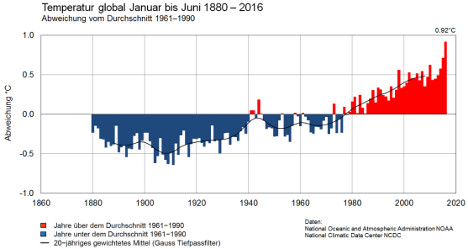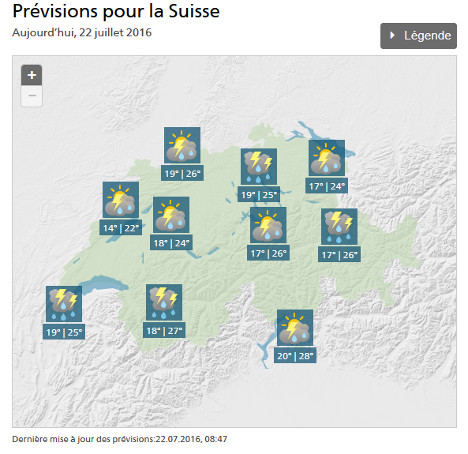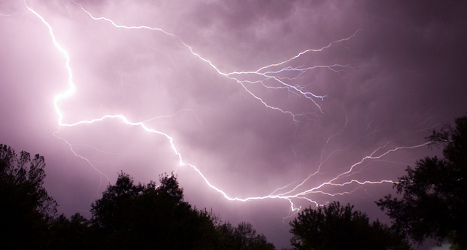Issuing a weather warning, Meteo Suisse said there was a “marked danger” of violent storms throughout most of the country from now until Saturday.
Storms have already hit in some parts, especially the Jura, which saw “severe thunderstorms” on Thursday night, according to SRF Meteo.
In La Brévine – known for its extreme weather – 33 millimetres of rain fell in two hours, it said.
The storms will cool the country slightly after temperatures rose up to 35C degrees this week.
Much of the country experienced another ‘tropical’ night on the night of Wednesday to Thursday – so-called when temperatures do not fall below 20C degrees during the whole night.
While Switzerland hasn’t so far this year beaten its past record for hot weather, set in 2007, meteorologists have confirmed that, globally, the planet is hotter than ever.
Reporting figures by the National Oceanic and Atmospheric Administration (NOAA), Meteo Suisse said the average global temperature in the first six months of the year was 0.92 degrees above the norm, smashing the previous record, set last year, of 0.71 degrees higher than normal.
The planet’s overall average temperature rose for the 14th consecutive month in June, partly due to the El Niño weather phenomenon in the Pacific which is the third most intense in the last 65 years.

Global temperature from 1880-2016. Source: Meteo Suisse
In Switzerland the average temperature in June was 0.2 degrees above the norm, but it was also the wettest June on record in some parts of the country, according to Meteo Suisse.
Speaking to Le Matin, Vincent Devantay from Meteo News said it was difficult to say why, but that certain climatologists think “global warming can lead to more meteorological phenomena such as intense rainfall”.
“But these are only predictions,” he added.
Deal Gil of Meteo Suisse was more cautious still, saying June is often a “deceiving” time of year.
“We associate it with flowers and the sun, when in reality the weather is often rather gloomy,” he told the paper.
“Our geographical location, halfway between the north pole and the equator, means we have a climate that alternates between hot and cold depending on the air currents.”
That has certainly been reflected in the Swiss summer so far, which has seen periods of intense heat and even snow in some parts.




 Please whitelist us to continue reading.
Please whitelist us to continue reading.
Member comments